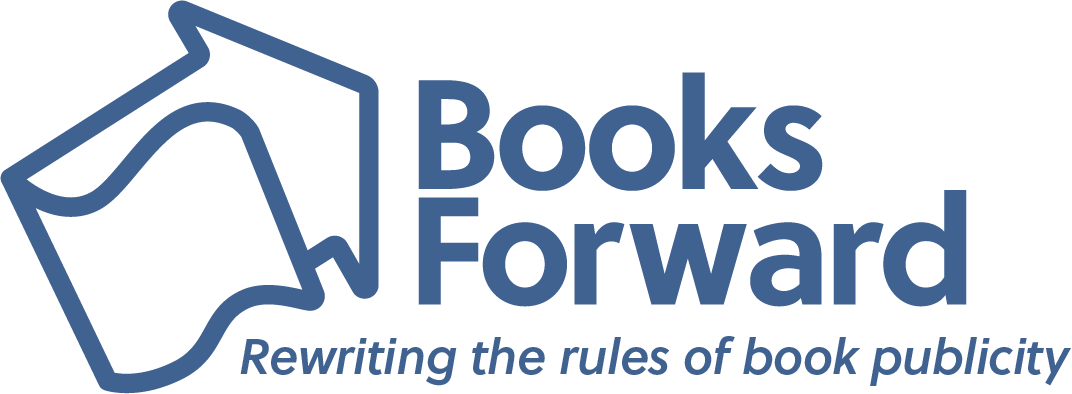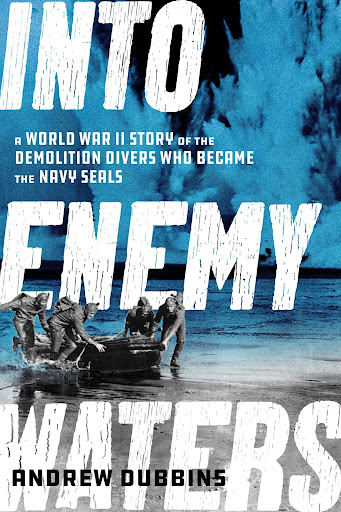 LOS ANGELES, California – With echoes of Unbroken, the derring-do and bravado of The Right Stuff; and the battle-forged camaraderie of Band of Brothers, Into Enemy Waters by award-winning journalist Andrew Dubbins (Aug. 23, 2022, Diversion Books) details the origins and heroic missions of World War II’s elite unit of Navy frogmen, told through the eyes of one of its last living members, 95-year-old George Morgan.
LOS ANGELES, California – With echoes of Unbroken, the derring-do and bravado of The Right Stuff; and the battle-forged camaraderie of Band of Brothers, Into Enemy Waters by award-winning journalist Andrew Dubbins (Aug. 23, 2022, Diversion Books) details the origins and heroic missions of World War II’s elite unit of Navy frogmen, told through the eyes of one of its last living members, 95-year-old George Morgan.
Morgan was just a wiry, 17-year-old lifeguard from New Jersey when he joined the Navy’s new combat demolition unit, tasked to blow up enemy coastal defenses ahead of landings by Allied forces. His first assignment: Omaha Beach on D-Day.
When he returned stateside, Morgan learned that his service was only beginning. Outfitted with swim trunks, a dive mask, and fins, he was sent to Hawaii and then deployed to the Pacific as a member of the pioneering Underwater Demolition Teams. GIs called them “half fish, half nuts.” Today, we call them Navy SEALs.
Led by maverick Naval Reserve Officer Draper Kauffman, Morgan would spend the fierce final year of the war swimming up to enemy controlled beaches to gather intel and detonate underwater barriers. He’d have to master the sea, muster superhuman grit, and overcome the demons of Omaha Beach.
Moving closer to Japan, the enemy’s island defenses were growing more elaborate and its soldiers more fanatical. From the black sand beaches of Iwo Jima, to the shark infested reefs of Okinawa, to the cold seas of Tokyo Bay, teenaged George Morgan was there before most, fighting for his life. And for all of us.
Into Enemy Waters: A World War II Story of the Demolition Divers Who Became the Navy SEALS
Andrew Dubbins | Aug. 23, 2022 | Diversion Books |
Nonfiction | Biography | History | Military
Hardcover | ISBN 978-1635767728 | $28.99
Ebook | $28.99
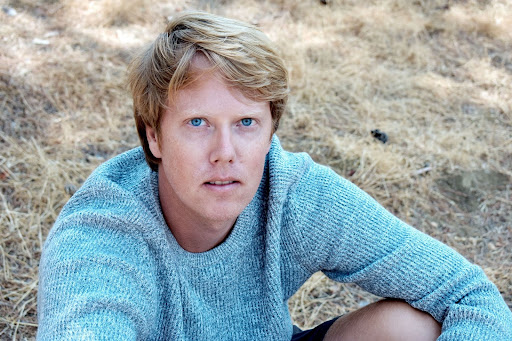 Andrew Dubbins is an award-winning journalist and author, whose work has appeared in Alta, Slate, Los Angeles Magazine, The Daily Beast, and other media outlets. He has covered drug smugglers and DEA agents, Cosa Nostra capos and FBI investigators, Maasai lion hunters-turned-conservationists, and Civil Rights pioneers. His writing has been recognized by the Los Angeles Press Club in its 2021 SoCal Journalism Awards, as well as among Longform.org’s “Best Articles of 2021” and The Daily Beast’s “Best Reads of 2017.” Several of his narrative nonfiction projects have been optioned for film and television. He graduated with honors from Georgetown University and lives in Los Angeles. Read more of his work at AndrewDubbins.com.
Andrew Dubbins is an award-winning journalist and author, whose work has appeared in Alta, Slate, Los Angeles Magazine, The Daily Beast, and other media outlets. He has covered drug smugglers and DEA agents, Cosa Nostra capos and FBI investigators, Maasai lion hunters-turned-conservationists, and Civil Rights pioneers. His writing has been recognized by the Los Angeles Press Club in its 2021 SoCal Journalism Awards, as well as among Longform.org’s “Best Articles of 2021” and The Daily Beast’s “Best Reads of 2017.” Several of his narrative nonfiction projects have been optioned for film and television. He graduated with honors from Georgetown University and lives in Los Angeles. Read more of his work at AndrewDubbins.com.
In an interview, Andrew Dubbins can discuss:
- The top secret Underwater Demolition Teams (UDT) and origins of the Navy SEALs
- How the Navy SEALs’ famous “Hell Week” started in World War II
- The pioneering tactics of the World War II frogmen, including leaping out of speeding landing craft and measuring ocean depth with fishing reel
- The importance of seeking out and chronicling the untold stories of World War II veterans before these experiences are lost to history
- His experience meeting and interviewing 95-year-old George Morgan, one of the last surviving veterans of the UDT
- How hearing Morgan’s accounts of Omaha Beach, Iwo Jima, and Okinawa changed his perspective of these historic battles
Praise for Into Enemy Waters
“Exhaustively researched and written in a lively, gripping manner, this history deserves to be on the bookshelf of anyone who admires courage or who has donned a face mask and looked below the surface of any sea.”
—Bing West, author of The Last Platoon, Marine combat Veteran, and former Assistant Secretary of Defense for International Security Affairs
“An authentic, vigorously reported and told story of the men in both the Atlantic and Pacific Theaters whose literally explosive exploits became the envy of and inspiration for the Navy SEALs. Thank goodness the ‘demolition divers’ are finally getting their due, and in such riveting detail.”
—Tom Clavin, New York Times bestselling coauthor of Halsey’s Typhoon: The True Story of a Fighting Admiral, an Epic Storm and an Untold Rescue; and Lightning Down
“Anyone awed by the traditions of the US Navy SEALs—as everyone should be—will be equally awed by how the SEALs became the SEALs. Dubbins has done a service not only to the SEALs, but also to the armchair adventurer who just wants a rip of a read.”
—Gary Kinder, New York Times bestselling author of Ship of Gold in the Deep Blue Sea
“A tale of breathtaking and breath-holding daring. This is D-Day and the Pacific Theater as you’ve never witnessed it before—through the eyes of the frogmen who reconnoitered the murky, mine-filled waters and hostile shores for allied landings. Into Enemy Waters reminds us of the meaning of true sacrifice and courage.”
—Buddy Levy, award-winning and bestselling author of Labyrinth of Ice: The Triumphant and Tragic Greely Polar Expedition and River of Darkness
“A superior piece of narrative military history, offering intimate profiles of the young men called upon to perform some of the most dangerous feats of World War II that proved critical to pivotal battles on both fronts. Andrew Dubbins has succeeded in portraying a fully human portrait of these men, who were both vulnerable to the horror of war and somehow able to survive it.”
—McKay Jenkins, author of The Last Ridge: The Epic Story of America’s First Mountain Soldiers and the Assault on Hitler’s Europe
“Gripping and intensely moving, Into Enemy Waters is a timely reminder that war leaves none of its participants unaffected. Andrew Dubbins has honored the memory of those who gave their lives and announced himself as a major new talent in narrative nonfiction.”
—Saul David, author of Crucible of Hell: The Heroism and Tragedy of Okinawa, 1945
“A remarkably stirring narrative that transports readers into the gritty realities of surviving World War II. Andrew Dubbins’ Into Enemy Waters is more than just a great retelling of the history of early combat swimmers and frogmen. This well-researched book is both visceral and uplifting, telling of a time of great courage, integrity and camaraderie. These are not your Hollywood Navy SEALs. They are real men that sacrificed their youth and innocence for the greater good.”
—Jill Heinerth, author of Into The Planet: My Life as a Cave Diver
“This book is a rollicking tale of warfare from a different time, when America’s elite units were cobbled together on short notice and manned with skinny teenagers who had every reason to expect they would get killed in battle. It is a story of noble intentions but also terrible desperation. Andrew Dubbins elegantly weaves personal stories through the grand historical narrative, while offering a compelling backstory about the hardscrabble origins of a legendary special operations force.”
—Graeme Smith, author of The Dogs Are Eating Them Now: Our War In Afghanistan
“The harrowing combat experiences of George Morgan and his pioneering comrades of the World War II US Navy’s combat demolition units come to life in this well-researched, intimate history. Andrew Dubbins tells their story with authoritative empathy and much verve.”
—John C. McManus, Ph.D., Curators’ Distinguished Professor of History, Missouri S&T, and author of Island Infernos: The U.S. Army’s Pacific War Odyssey, 1944
“Today’s SEALs are a highly effective, versatile, and lethal force, but they stand on the shoulders of these heroic World War II frogmen. This book must be included in the canon of histories about our nation’s special operations forces. Andrew Dubbins meticulously and faithfully takes the reader from Fort Pierce to Omaha Beach to the bloody amphibious invasions of the Pacific to recount the story of the Navy’s fabled Underwater Demolition Teams. May their memory never fade.”
—Captain Michael V. Goshgarian, USN (ret.), Naval Special Warfare 1989-2016
“This is a gripping, heart-racing, nail-biting masterpiece. It tells the story of George Morgan, his commander and fellow frogmen on an underwater demolition team that evolved into the Navy SEALs. Join them at Normandy, where, faces gray with fear, they swim through searing gunfire, shrieking shells and moaning men to blast apart Nazi barriers; then join them in the Pacific, where, during the bloodiest invasions of World War II, they map the ocean floor at Iwo Jima for US warships and swim onto the shores of Japan itself. These are their personal stories, exhaustively reported by a master of elegantly layered styling, who has written a book about rare and breathtaking courage. It will hold you deeply into the night, and you will be glad that it did.”
—Richard E. Meyer, senior editor at UCLA Blueprint magazine and two-time Pulitzer finalist
“As their numbers decline, it is essential to preserve the memories of the veterans of World War II. Andrew Dubbins has done this in this excellent book, describing the tragic horror of that war while writing of the daily acts of courage of those who served. From Normandy to Iwo Jima, his account of the courageous Underwater Demolition Teams, the famed US Navy ‘Frogmen,’ is powerful. But in Dubbins’ sensitive telling, it is also so very personal and human. A moving story well told.”
—James Wright, President Emeritus of Dartmouth College, historian and Marine Corps veteran, and author of War and American Life: Reflections on Those Who Serve and Sacrifice
An Interview with Andrew Dubbins
 How did you first hear about George Morgan?
How did you first hear about George Morgan?
After a visit to the wonderful National World War II Museum in New Orleans, I found George’s oral history interview in the museum’s online collection. The interview was recorded close to seven decades after the war, and yet it was the first time he had talked about his wartime experience in detail. I was fascinated with his descriptions of the Underwater Demolition Teams—which is a unit that never got the publicity it deserved in my opinion—and I was moved by his account. He became choked up numerous times during the interview, recalling his wartime journey and reunion with his family. It’s easy to glamorize the World War II frogmen—their derring-do and underwater tactics—but there was nothing glamorous about George’s account. He was a vulnerable 17-year-old kid just trying to survive a terrifying war and make it home to his family. He was human—not a superhero—which I knew would make his story relatable and compelling for readers.
Why haven’t we heard this story before? And why is it important to tell now?
The UDT was a top secret unit. Its commander, Draper Kauffman, instituted a “media blackout” that prohibited reporters from writing articles about the unit during the war. It was the right thing to do. Kauffman knew that if the unit’s capabilities became widely known, the enemy could easily devise a countermeasure. The unfortunate consequence, however, was that the UDT frogmen never received widespread recognition for their important wartime contributions. Their heroism and sacrifices remained in the dark. In the decades since the war, there have been several history books about the UDT and a 1951 film called The Frogmen. But to this day, the story of the UDT and its courageous World War II-era frogmen remains largely unknown outside military circles.
As for why it’s important to tell now, World War II veterans are rapidly dwindling in number. Many of their stories have never been told, and those stories are as valuable today as they ever were. World War II veterans model humility, sacrifice, duty, and patriotism, offering a counterpoint to the arrogance, selfishness, partisanship, and bombast that have dominated American politics and culture in recent years. There are also brave men and women today fighting to defend democracy and resist fascism across the globe. These freedom fighters can draw courage and hope from the stories of World War II heroes, like the young frogmen who bravely swam ashore first to protect the free world.
You describe this book as a “narrative nonfiction thriller.” What does that mean, and what separates Into Enemy Waters from other military history books?
Narrative nonfiction is concerned not only with factual detail, which is essential, but also with literary techniques such as character development, plot structure, and scene building. I view narrative nonfiction war tales, such as mine, as a subset of military history, with some of my personal favorites being Laura Hillenbrand’s Unbroken, Daniel James Brown’s The Boys in the Boat, and Erik Larson’s In the Garden of Beasts.
George Morgan – the subject of your book – was just 17 years old when he joined the Navy’s new combat demolition unit, and he’s now 95. What was it like sitting down with him and hearing his stories? Was he willing to sit down with you or did it take any convincing?
It was a privilege first and foremost. The World War II generation will soon all be gone, so I felt honored to listen to George’s stories and get to know him as a person. Being an avid reader of history, I was enthralled hearing not just his World War II account, but also his stories of growing up during the Depression, witnessing the Hindenburg on the day of its crash, seeing an early prototype of the television, trying out for the Brooklyn Dodgers, and meeting the famous baseball manager, Branch Rickey. He was never boastful in telling these stories, always downplaying his role in fact. He exemplified the self-effacing attitude and humility that is so typical of those who belong to the Greatest Generation.
He was always gracious and willing to sit down with me, and we also talked for hours on the phone together. But, as I recount in the book, it was not easy for him. Certain combat experiences had been so traumatic, that he’d tried to put those episodes out of his mind for the past seven decades. He admitted that talking to me caused those difficult memories and emotions to bubble up. I think he deserves as much praise for his courage in recounting his story, as he does for his wartime courage.
Your book mentions many familiar battles that occurred during World War II. Did speaking with George change your perspective of those historic events?
As a reporter, my favorite moments in interviewing people who participate in momentous events are the surprises. For example, I had read much about the reconnaissance of Okinawa, where the UDT frogmen blew up thousands of sharpened stakes that had been pounded into the coral reef to stymie Allied landing boats. I asked George if he cheered when he saw the explosion. He said no: he was startled and flinched. I was coming in with a romanticized view of the frogmen’s bravado, but when you talk to someone who was there, you see that these were real events, with real people, feeling real emotions.
Where does your fascination with World War II stem from?
It stems from my mother telling me stories about my grandfather, Jack Foster. He was a Naval Lieutenant Commander who flew PBY Catalina seaplanes in the Aleutians during the war. Reminiscent of the film Saving Private Ryan, he lost two brothers in World War II, one in a bomber over Italy, and the other in a landing craft at Guam. He shared a few things about the war before his death at 72-years-old: how it “tested his mettle;” how they lost more planes in Alaska to the weather than the Japanese; how he was frightened every time he climbed into his cockpit; and how his crew was stranded for days on a raft after a crash in the chilly northern Pacific. But I was never able to hear the stories directly; he died six days after I was born. So, my Grandpa Jack sparked my interest in World War II, and taught me there is a time stamp on these stories.
Can you give us a glimpse into your research process for Into Enemy Waters? Did you come across anything surprising?
I devoured every book and article that I could find on the UDT; watched and read transcripts of UDT oral histories, including Draper Kauffman’s. I also scoured the archives for pertinent UDT after-action reports, and visited the National World War II Museum in New Orleans, the National Navy SEAL Museum and the History of Diving Museum in Florida. About half of my time was spent talking to George, and the other half was devoted to research. The surprises, for me, are always the gap between my preconceptions of an historic event, and the accounts of actual participants, which almost always vary from one individual to the next. For instance, one soldier might recall the carnage of Omaha Beach, while another remembers being thrilled by the experience, and awed by the display of military might. One sailor might shiver recalling the Kamikazes, while another remembers the sight of the planes plunging and flaming in the night as “beautiful.”
Did George Morgan share any perspective on how far the SEALs have come from its origins?
Yes, and it was a light-hearted moment in one of our meetings. George told the story of how he got to tour Coronado, where the Navy SEALs train. He walked through their state-of-the-art gym and equipment locker, and told me that today’s SEALs are in such better shape than the WWII frogmen, and undergo a much more grueling Hell Week. On the one hand, it’s true. Unlike the UDT—who swam ashore unarmed, and were a defensive unit—the SEALs are an elite, offensive force, armed to the teeth. Their “Hell Week” selection process is indeed tougher than that of their UDT forebearers. That said, I reminded George in the interview, “But you were the first!” George and his fellow frogmen came long before our modern age of high-tech warfare, exemplifying pure strength, endurance, resourcefulness, and courage. The SEALs were able to draw from and build on the experiences and pioneering techniques of the World War II frogmen. I’ve been privileged to speak with Navy SEALs who’ve read the book, and they agree.
What was George’s life like after the war?
Like so many members of the Greatest Generation, George tried to put his wartime experiences behind him and move on with his life. He became very successful in the food industry, eventually launching his own business, started a family, and raised two kids. Despite his efforts to push the war out of his mind, it had a major impact on his life. The physical pain from his combat injuries lingers to this day; and the war’s psychological toll was even harder to cope with. Shortly after returning home, he experienced fainting spells, a common symptom of PTSD, which wasn’t understood back then. To this day, at 95, he continues to have nightmares related to World War II.
What do you hope people take away from this story?
I hope, above all, that they recognize the tremendous contributions made by the World War II demolition men, who were truly unsung heroes of the war, the tip of America’s amphibious spear. Without their skill, specialized training, and bravery, some of the most famous battles of the war—from Omaha Beach to Iwo Jima—might have turned out differently, and our world would be a very different place. I also hope that the book is a gripping and action-packed read that appeals not just to historians, but readers in general.
Download press kit and photos
A former award-winning journalist with national exposure, Marissa now oversees the day-to-day operation of the Books Forward author branding and book marketing firm, along with our indie publishing support sister company Books Fluent.
Born and bred in Louisiana, currently living in New Orleans, she has lived and developed a strong base for our company and authors in Chicago and Nashville. Her journalism work has appeared in USA Today, National Geographic and other major publications. She is now interviewed by media on best practices for book marketing.
 New Orleans, LA – Whether you currently have a mutt, grew up with one, or you’re a pet-free animal lover, MUTTS by Olivia Grey Pritchard is a must have for your coffee table.
New Orleans, LA – Whether you currently have a mutt, grew up with one, or you’re a pet-free animal lover, MUTTS by Olivia Grey Pritchard is a must have for your coffee table. After five years as a United Nations photographer working in combat zones, Olivia moved to New Orleans in 2012 and began serving families with her unique perspective of the visual legacy we want to create for our children (with fur and without!). Through her work behind the camera and creating her archival-quality artwork that families cherish for generations, Olivia preserves both the milestone and the everyday memories.
After five years as a United Nations photographer working in combat zones, Olivia moved to New Orleans in 2012 and began serving families with her unique perspective of the visual legacy we want to create for our children (with fur and without!). Through her work behind the camera and creating her archival-quality artwork that families cherish for generations, Olivia preserves both the milestone and the everyday memories.

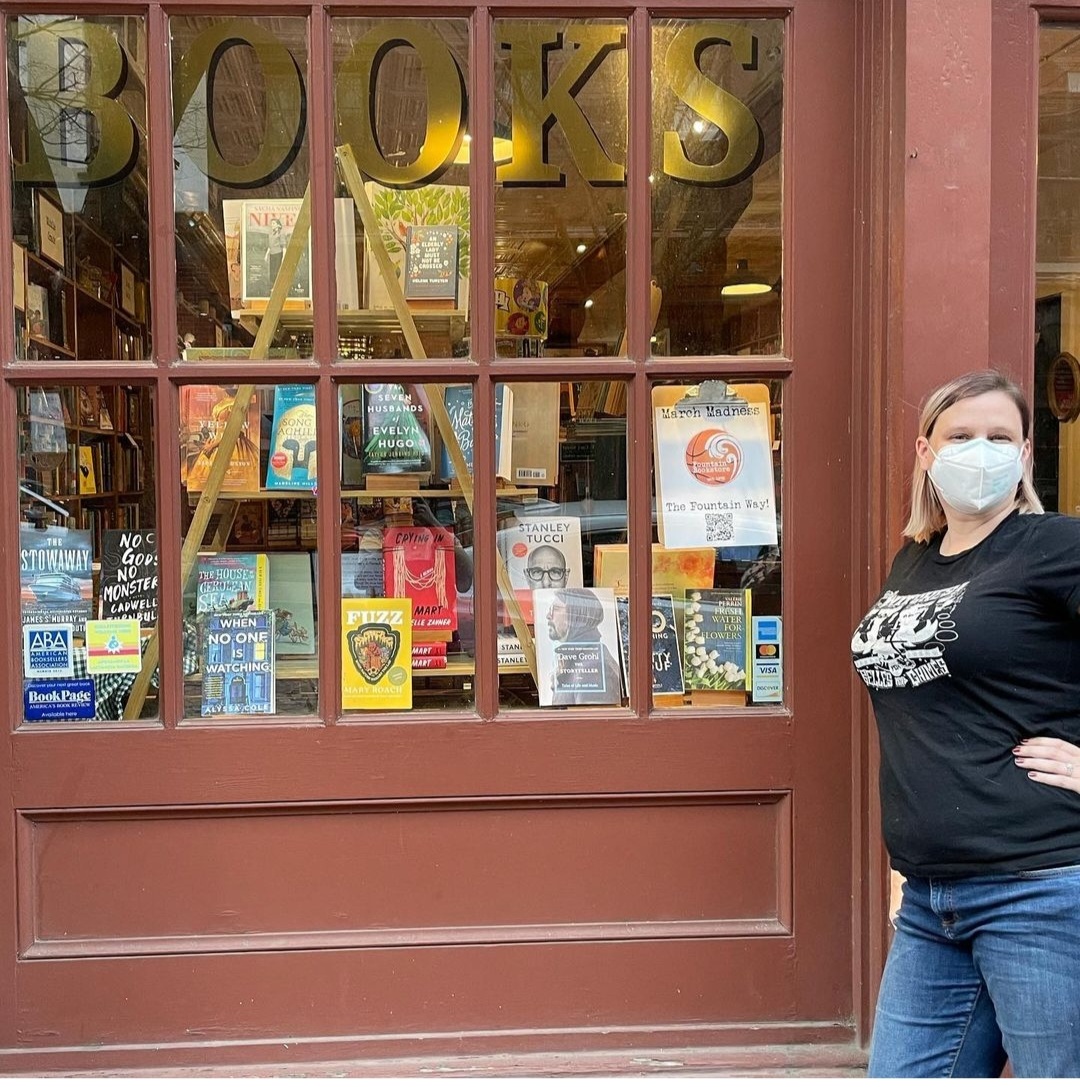 What’s your favorite area of your bookstore?
What’s your favorite area of your bookstore?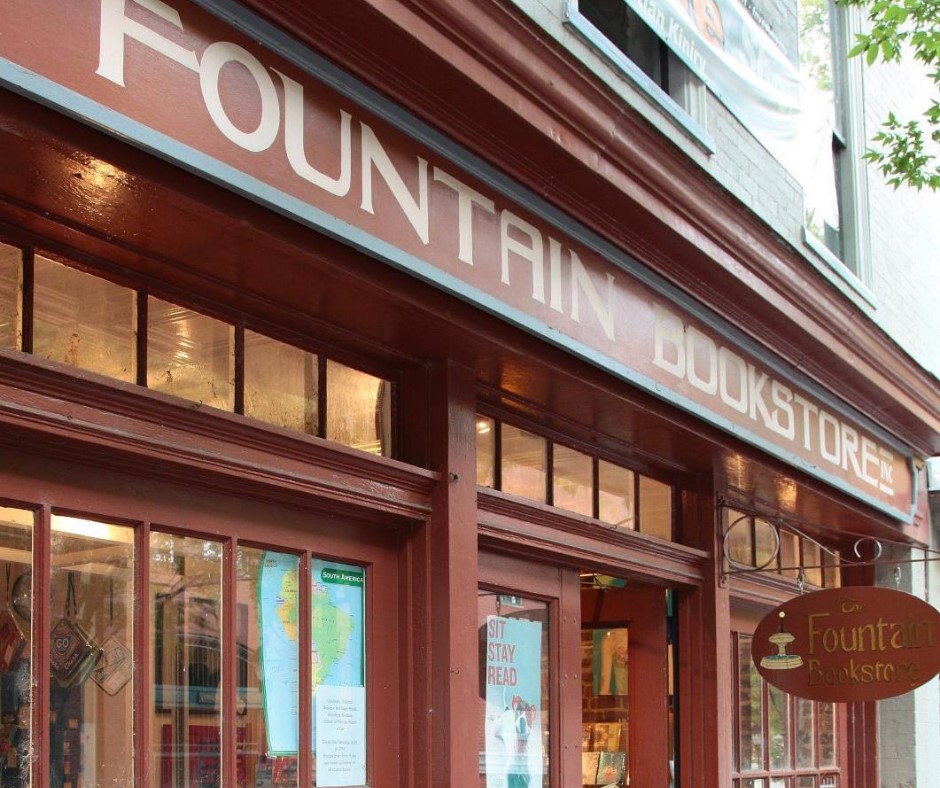 Can you recommend an underrated readalike book for one of the store’s top titles?
Can you recommend an underrated readalike book for one of the store’s top titles?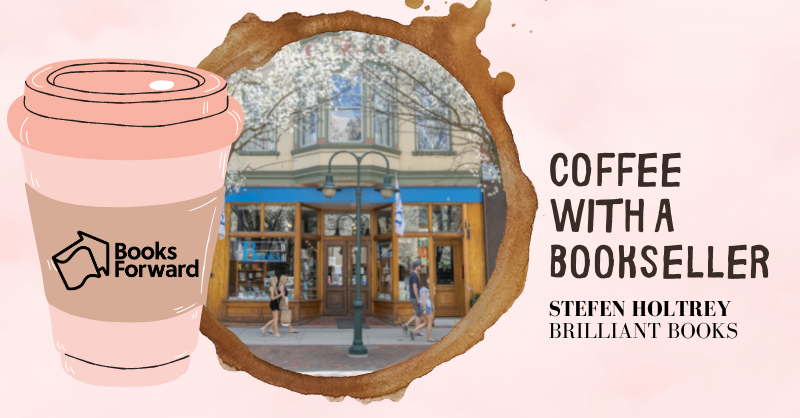
 What’s your favorite area of your bookstore?
What’s your favorite area of your bookstore?
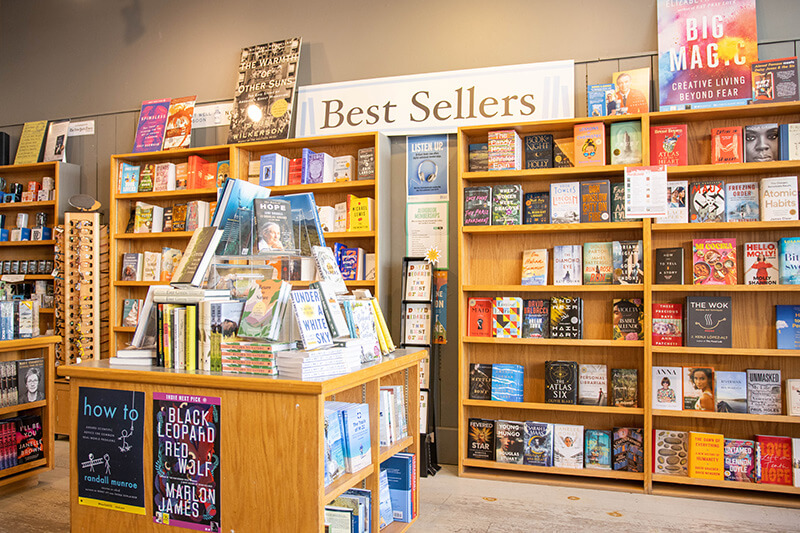


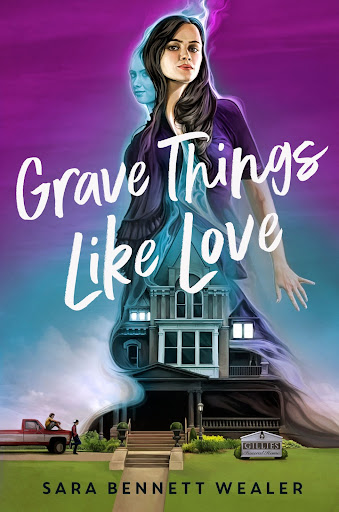 Cincinnati, OH — Acclaimed YA author Sara Bennett Wealer returns with an exciting new contemporary novel that will pull readers in from the first intriguing line. Wealer crafts a perfect concoction of romance, coming of age, and a dash of the supernatural that is absolutely to die for. Readers will want to sink their teeth into this tale that is both heartwarming and chilling–perfect for spooky season.
Cincinnati, OH — Acclaimed YA author Sara Bennett Wealer returns with an exciting new contemporary novel that will pull readers in from the first intriguing line. Wealer crafts a perfect concoction of romance, coming of age, and a dash of the supernatural that is absolutely to die for. Readers will want to sink their teeth into this tale that is both heartwarming and chilling–perfect for spooky season.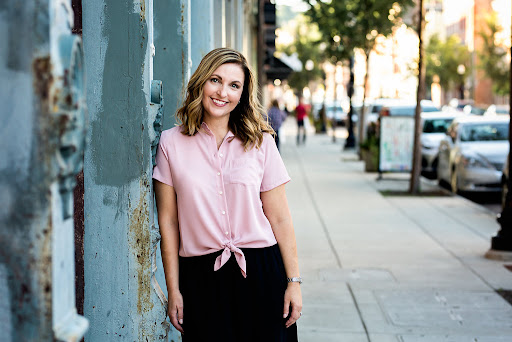 Sara grew up in Manhattan, Kansas (the “Little Apple”), where she sang in all the choirs and wrote for the high school newspaper. She majored in voice performance at the University of Kansas before deciding she had no business trying to make a career as an opera singer and transferred to journalism school, where no one cares if you can hit a high C or convincingly play a Valkyrie. She went on to become a reporter covering everything from house fires to Hollywood premieres.
Sara grew up in Manhattan, Kansas (the “Little Apple”), where she sang in all the choirs and wrote for the high school newspaper. She majored in voice performance at the University of Kansas before deciding she had no business trying to make a career as an opera singer and transferred to journalism school, where no one cares if you can hit a high C or convincingly play a Valkyrie. She went on to become a reporter covering everything from house fires to Hollywood premieres.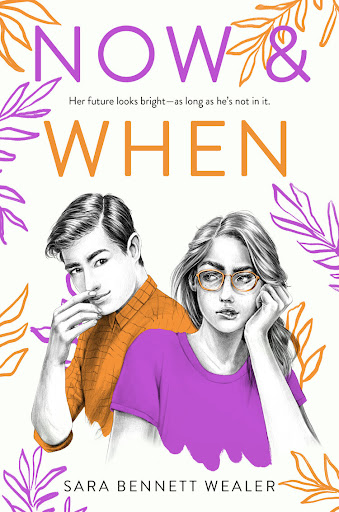 “From the meet-cute to the emotional conclusion, a breezy rom-com and poignant coming of age story in perfect balance.”
“From the meet-cute to the emotional conclusion, a breezy rom-com and poignant coming of age story in perfect balance.” NASHVILLE, Tennessee – On August 31, 1994, H.H. Leonards received a call from Brother Willis Edwards of the Beverly Hills NAACP. “Could Mrs. Parks please stay in your hotel until she’s healed emotionally and physically?” Rosa Parks had recently been attacked in her Detroit home—and upon her release from the hospital, she could not safely return to the site of the assault. Despite her legendary status as the Mother of the Civil Rights Movement, she was not wealthy and she needed refuge. This is how their friendship began.
NASHVILLE, Tennessee – On August 31, 1994, H.H. Leonards received a call from Brother Willis Edwards of the Beverly Hills NAACP. “Could Mrs. Parks please stay in your hotel until she’s healed emotionally and physically?” Rosa Parks had recently been attacked in her Detroit home—and upon her release from the hospital, she could not safely return to the site of the assault. Despite her legendary status as the Mother of the Civil Rights Movement, she was not wealthy and she needed refuge. This is how their friendship began.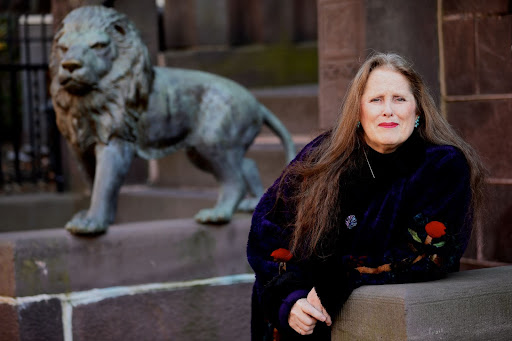 H.H. Leonards is the founder and chair of the O Street Museum Foundation, headquartered in Washington, D.C., and the Mansion on O Street, where Mrs. Rosa Parks called her home-away-from-home for the last decade of her life. Leonards is a wife, mother of three, and friend to celebrities and everyday people alike. The Purdue University alumna established The Mansion in 1980 to provide a unique and eclectic forum where clients learn from one another and foster the development of diversity, the creative process and the human spirit.
H.H. Leonards is the founder and chair of the O Street Museum Foundation, headquartered in Washington, D.C., and the Mansion on O Street, where Mrs. Rosa Parks called her home-away-from-home for the last decade of her life. Leonards is a wife, mother of three, and friend to celebrities and everyday people alike. The Purdue University alumna established The Mansion in 1980 to provide a unique and eclectic forum where clients learn from one another and foster the development of diversity, the creative process and the human spirit.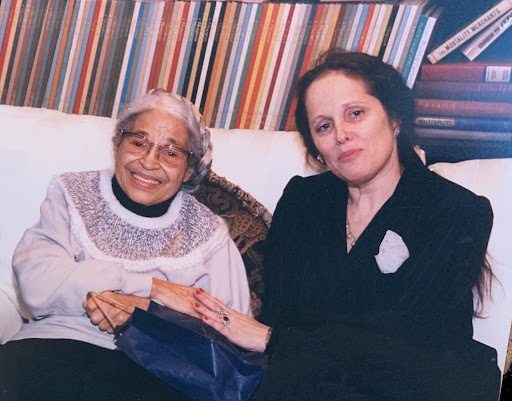
 As president and CEO of R.H. Boyd Publishing, Dr. LaDonna Boyd is shaping and leading R.H. Boyd’s efforts to broaden its scope and offerings for modern needs. With a targeted focus on product development, technology, commercial (non-religious) printing opportunities and author resources, Dr. Boyd has been preparing for a number of years to take the reins as a CEO—cultivating a wide range of skills necessary to lead the R. H. Boyd through a new generation.
As president and CEO of R.H. Boyd Publishing, Dr. LaDonna Boyd is shaping and leading R.H. Boyd’s efforts to broaden its scope and offerings for modern needs. With a targeted focus on product development, technology, commercial (non-religious) printing opportunities and author resources, Dr. Boyd has been preparing for a number of years to take the reins as a CEO—cultivating a wide range of skills necessary to lead the R. H. Boyd through a new generation. GREENSBORO, North Carolina – Chanticleer International Book Award winning author, Alison Levy, returns with her electric second installment in The Daemon Collecting Series. “Blue Flame” (Oct. 11 2022, SparkPress) continues with the adventures of headstrong and tenacious protagonist, Rachel Wilde.
GREENSBORO, North Carolina – Chanticleer International Book Award winning author, Alison Levy, returns with her electric second installment in The Daemon Collecting Series. “Blue Flame” (Oct. 11 2022, SparkPress) continues with the adventures of headstrong and tenacious protagonist, Rachel Wilde.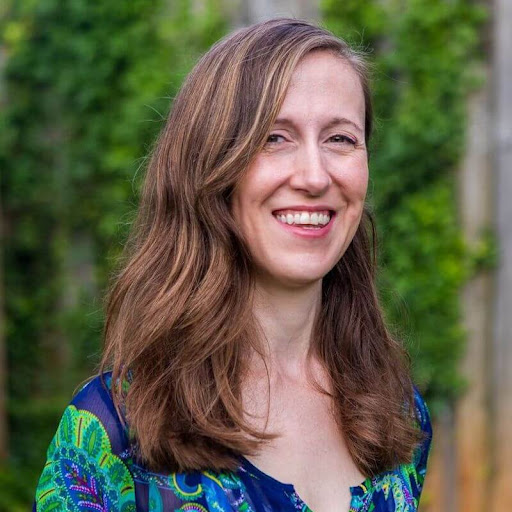 Alison Levy lives in Greensboro, North Carolina with her husband, son, and a variety of pets. When she is not writing or doing mom things, she crochets, gardens, walks her collies, and works on home improvement projects.
Alison Levy lives in Greensboro, North Carolina with her husband, son, and a variety of pets. When she is not writing or doing mom things, she crochets, gardens, walks her collies, and works on home improvement projects.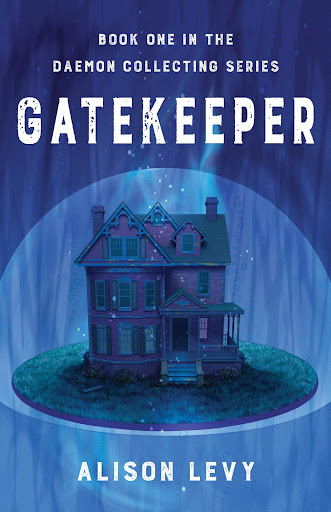 “A compelling, yet endearing, read about a very resourceful inter-dimensional cop Rachel who deals with broken daemons, homeless oracles, linguists, and serial killers with her own style of grace and tenacity. You might not see your own world in quite the same way as you look for the hidden passageways just out of view.”
“A compelling, yet endearing, read about a very resourceful inter-dimensional cop Rachel who deals with broken daemons, homeless oracles, linguists, and serial killers with her own style of grace and tenacity. You might not see your own world in quite the same way as you look for the hidden passageways just out of view.”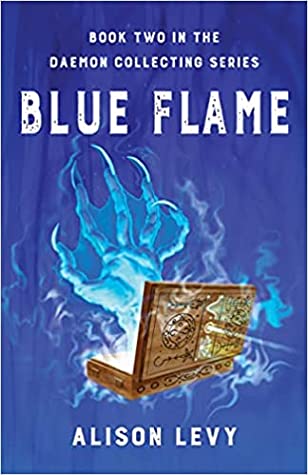 Alison Levy’s 2nd installment of the Daemon Collecting Series is a dark and whimsical adventure with a colorful cast of characters you’ll be eager to keep tabs on. Masterful storytelling and exceptional worldbuilding. A unique, action-packed Urban Fantasy series with grit, wit, and a whole lot of heart. Levy has created a truly original series in a genre that doesn’t see much originality these days. Her colorful cast of characters (and creatures) will stick with you long after you turn the last page.
Alison Levy’s 2nd installment of the Daemon Collecting Series is a dark and whimsical adventure with a colorful cast of characters you’ll be eager to keep tabs on. Masterful storytelling and exceptional worldbuilding. A unique, action-packed Urban Fantasy series with grit, wit, and a whole lot of heart. Levy has created a truly original series in a genre that doesn’t see much originality these days. Her colorful cast of characters (and creatures) will stick with you long after you turn the last page. LOS ANGELES, California – With echoes of Unbroken, the derring-do and bravado of The Right Stuff; and the battle-forged camaraderie of Band of Brothers, Into Enemy Waters by award-winning journalist Andrew Dubbins (Aug. 23, 2022, Diversion Books) details the origins and heroic missions of World War II’s elite unit of Navy frogmen, told through the eyes of one of its last living members, 95-year-old George Morgan.
LOS ANGELES, California – With echoes of Unbroken, the derring-do and bravado of The Right Stuff; and the battle-forged camaraderie of Band of Brothers, Into Enemy Waters by award-winning journalist Andrew Dubbins (Aug. 23, 2022, Diversion Books) details the origins and heroic missions of World War II’s elite unit of Navy frogmen, told through the eyes of one of its last living members, 95-year-old George Morgan. Andrew Dubbins is an award-winning journalist and author, whose work has appeared in Alta, Slate, Los Angeles Magazine, The Daily Beast, and other media outlets. He has covered drug smugglers and DEA agents, Cosa Nostra capos and FBI investigators, Maasai lion hunters-turned-conservationists, and Civil Rights pioneers. His writing has been recognized by the Los Angeles Press Club in its 2021 SoCal Journalism Awards, as well as among Longform.org’s “Best Articles of 2021” and The Daily Beast’s “Best Reads of 2017.” Several of his narrative nonfiction projects have been optioned for film and television. He graduated with honors from Georgetown University and lives in Los Angeles. Read more of his work at
Andrew Dubbins is an award-winning journalist and author, whose work has appeared in Alta, Slate, Los Angeles Magazine, The Daily Beast, and other media outlets. He has covered drug smugglers and DEA agents, Cosa Nostra capos and FBI investigators, Maasai lion hunters-turned-conservationists, and Civil Rights pioneers. His writing has been recognized by the Los Angeles Press Club in its 2021 SoCal Journalism Awards, as well as among Longform.org’s “Best Articles of 2021” and The Daily Beast’s “Best Reads of 2017.” Several of his narrative nonfiction projects have been optioned for film and television. He graduated with honors from Georgetown University and lives in Los Angeles. Read more of his work at 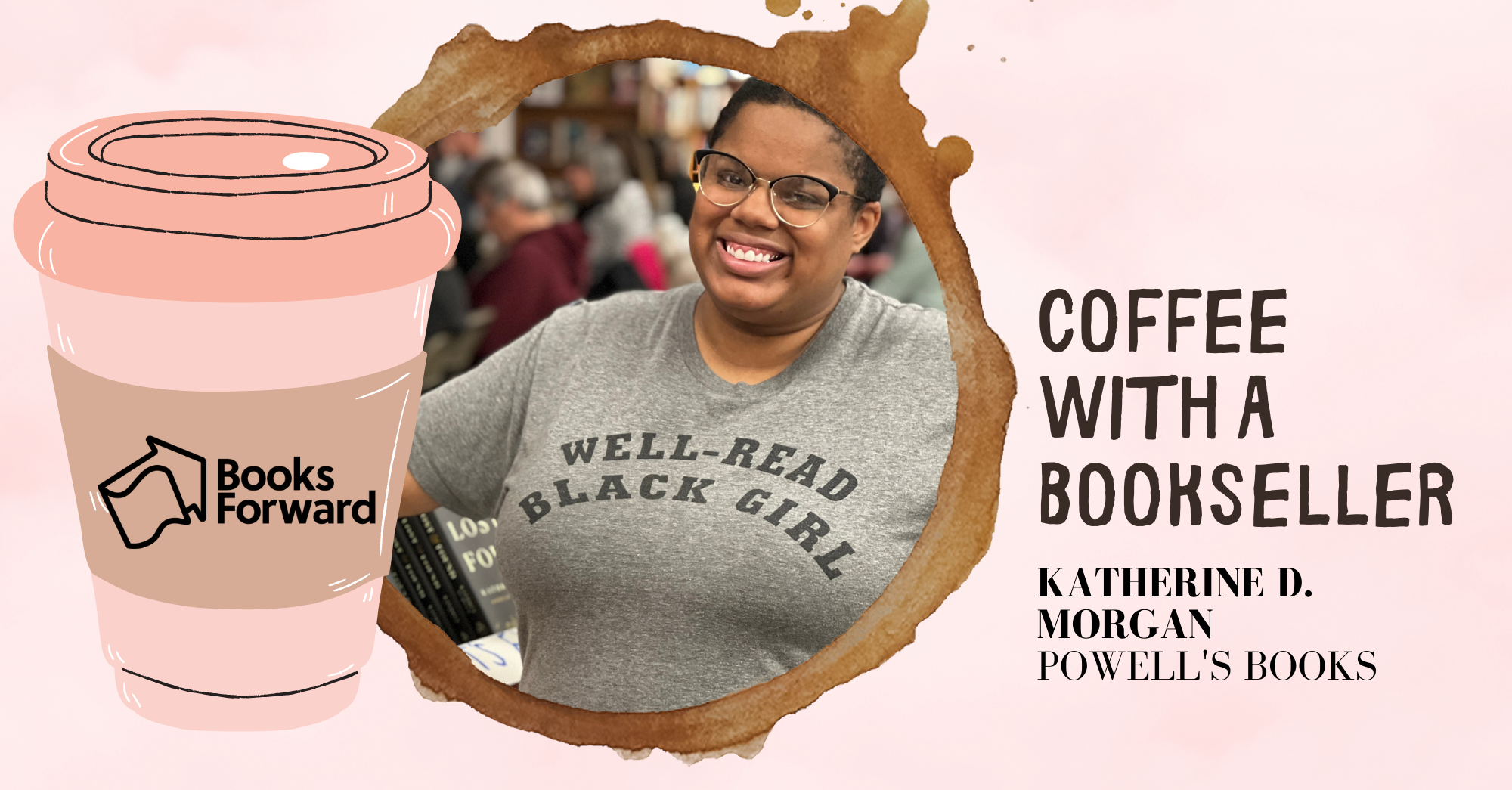
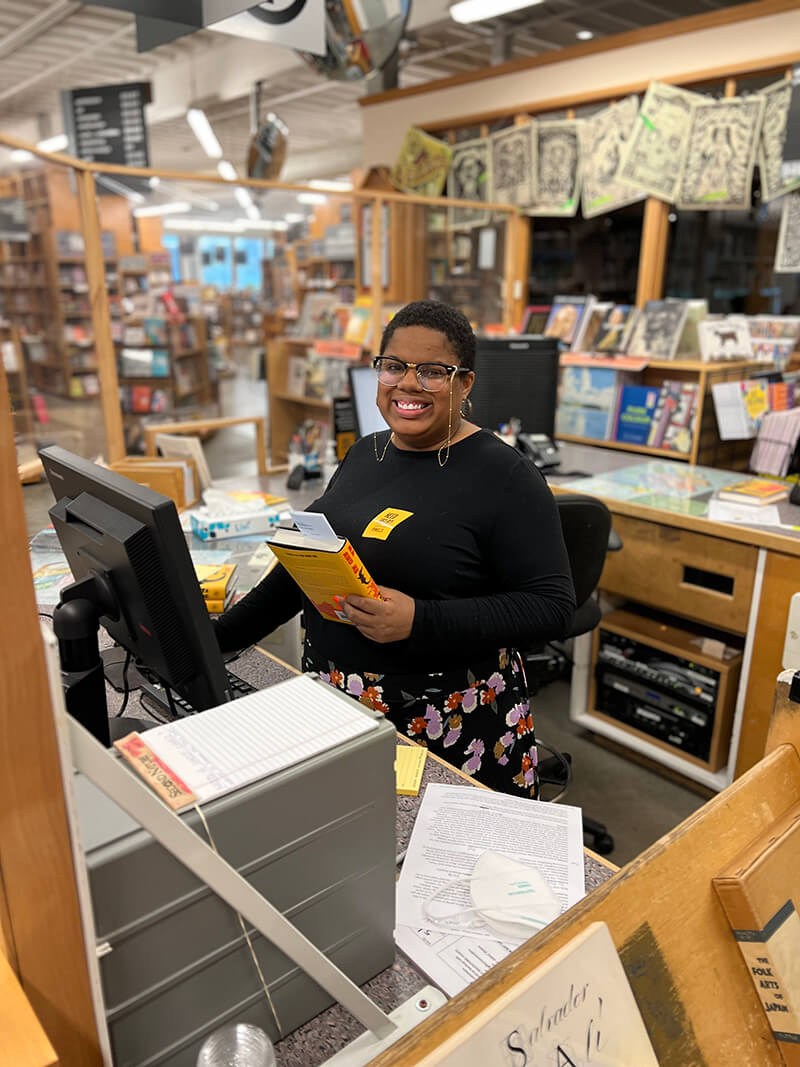 What’s your favorite area of your bookstore?
What’s your favorite area of your bookstore? What is your least favorite bookstore task? Favorite part about working in a bookstore?
What is your least favorite bookstore task? Favorite part about working in a bookstore?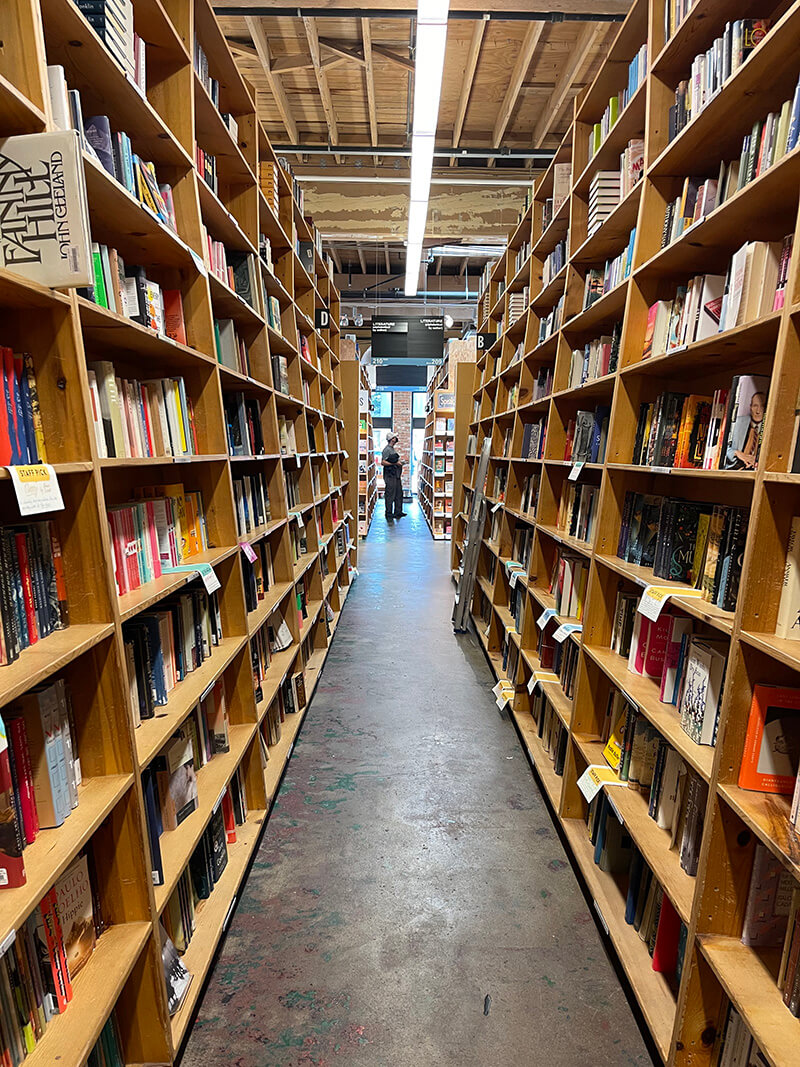
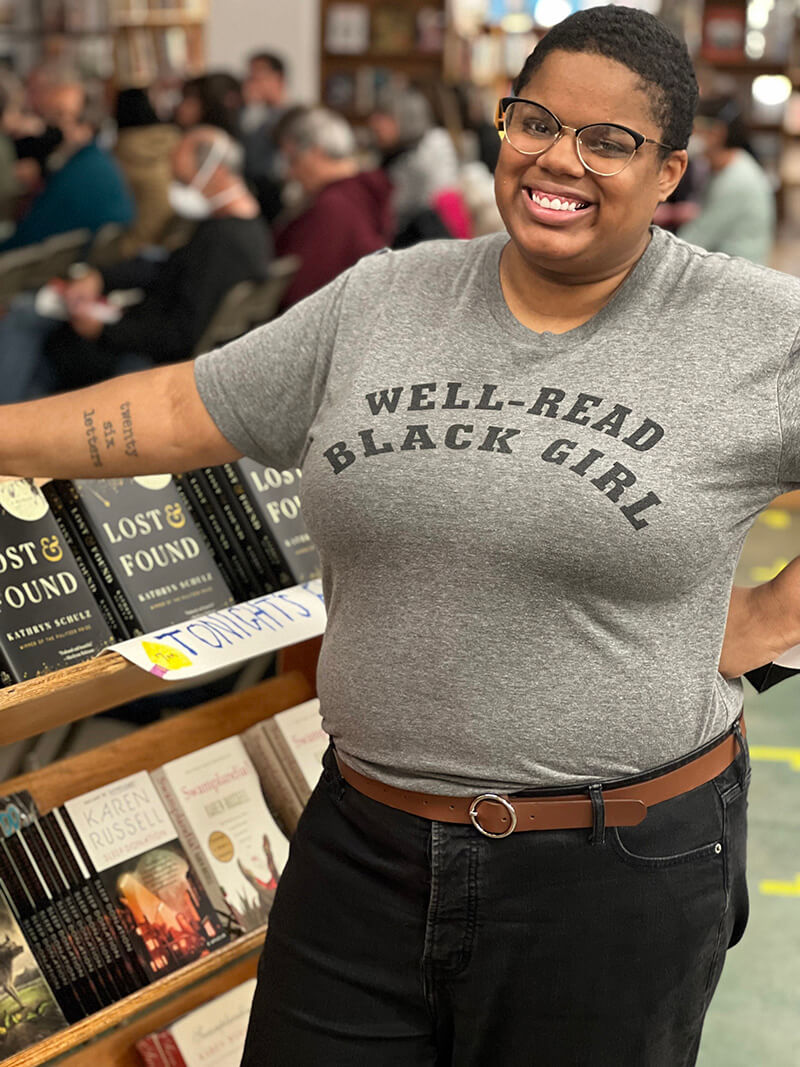
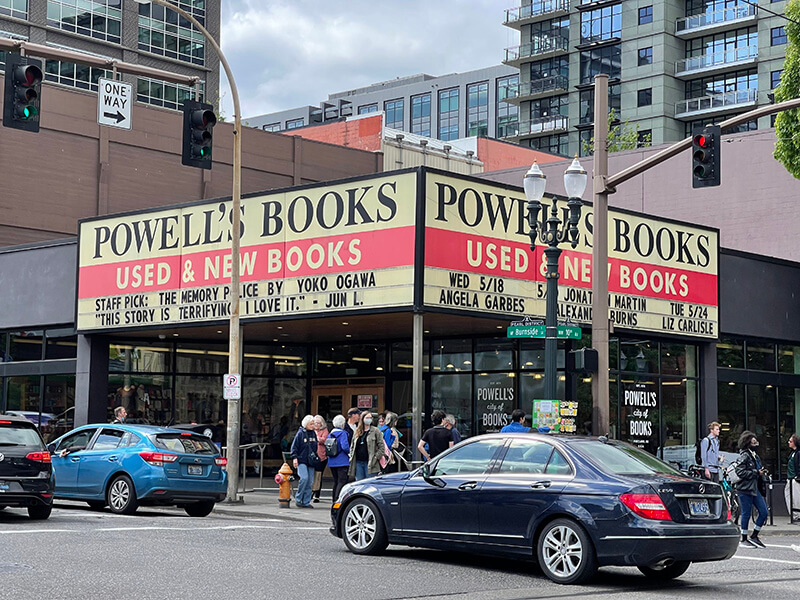

 Debut author tired of male-dominated fantasy pens female-driven epic
Debut author tired of male-dominated fantasy pens female-driven epic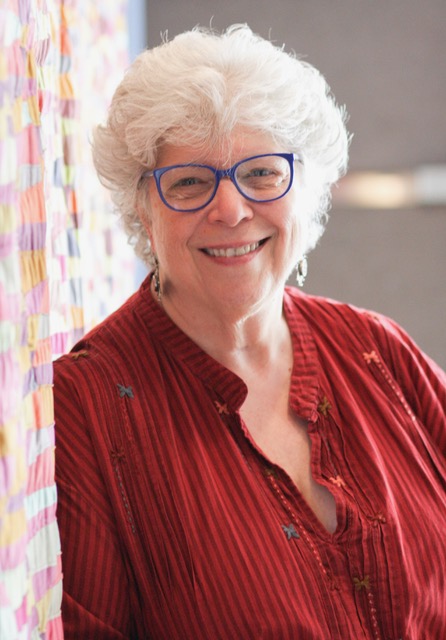 Catherine Raphael: Catherine Raphael grew up in a suburb of Pittsburgh, Pennsylvania, and has a bachelor’s degree in fine arts/metalsmithing. She worked as a jeweler in Pennsylvania for sixteen years, during which time she also traveled to Arizona to do construction work on Arcosanti, Paolo Soleri’s “City of the Future.” She is one of the founding mothers of the Women and Girls Foundation of Southwest Pennsylvania. She has served on the boards of the Ms. Foundation for Women and the Women Donors Network and volunteered with other progressive women’s rights organizations. In 2014, she attended a master class at Hedgebrook. The friendships she made there coalesced into the Roving Writers, her writing group. Pre-COVID, she was a regular attendee at the Iceland Writers Retreat in Reykjavik, Iceland. Her stories have won prizes in Writer Advice and the Ageless Authors competition, and her work has been short-listed in Women On Writing and long-listed in Bumble Bee. This is her first novel. You can find Catherine Raphael on her website:
Catherine Raphael: Catherine Raphael grew up in a suburb of Pittsburgh, Pennsylvania, and has a bachelor’s degree in fine arts/metalsmithing. She worked as a jeweler in Pennsylvania for sixteen years, during which time she also traveled to Arizona to do construction work on Arcosanti, Paolo Soleri’s “City of the Future.” She is one of the founding mothers of the Women and Girls Foundation of Southwest Pennsylvania. She has served on the boards of the Ms. Foundation for Women and the Women Donors Network and volunteered with other progressive women’s rights organizations. In 2014, she attended a master class at Hedgebrook. The friendships she made there coalesced into the Roving Writers, her writing group. Pre-COVID, she was a regular attendee at the Iceland Writers Retreat in Reykjavik, Iceland. Her stories have won prizes in Writer Advice and the Ageless Authors competition, and her work has been short-listed in Women On Writing and long-listed in Bumble Bee. This is her first novel. You can find Catherine Raphael on her website: 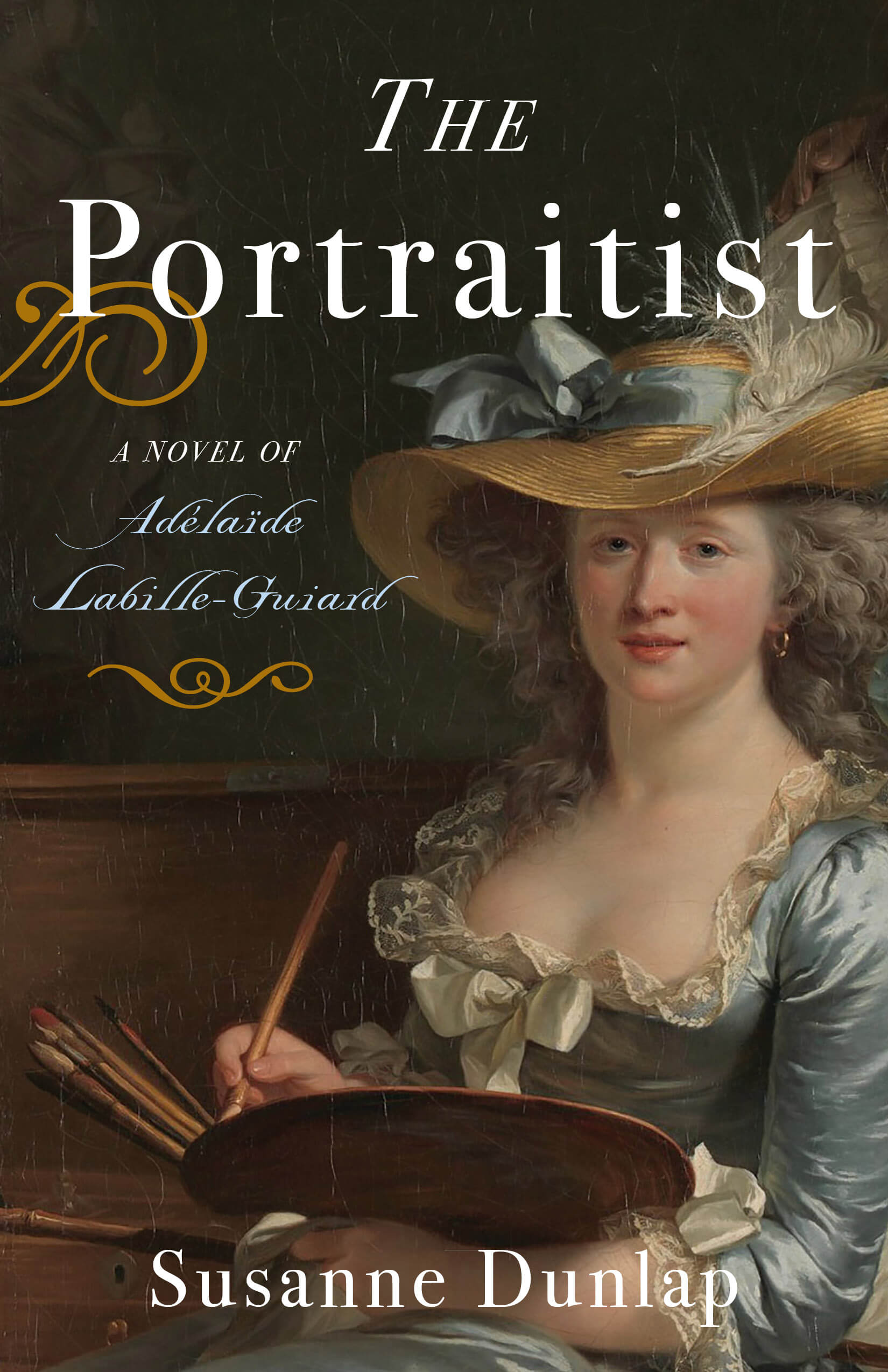 CIBA Award-winning author uses true events to create inspiring and hopeful tale
CIBA Award-winning author uses true events to create inspiring and hopeful tale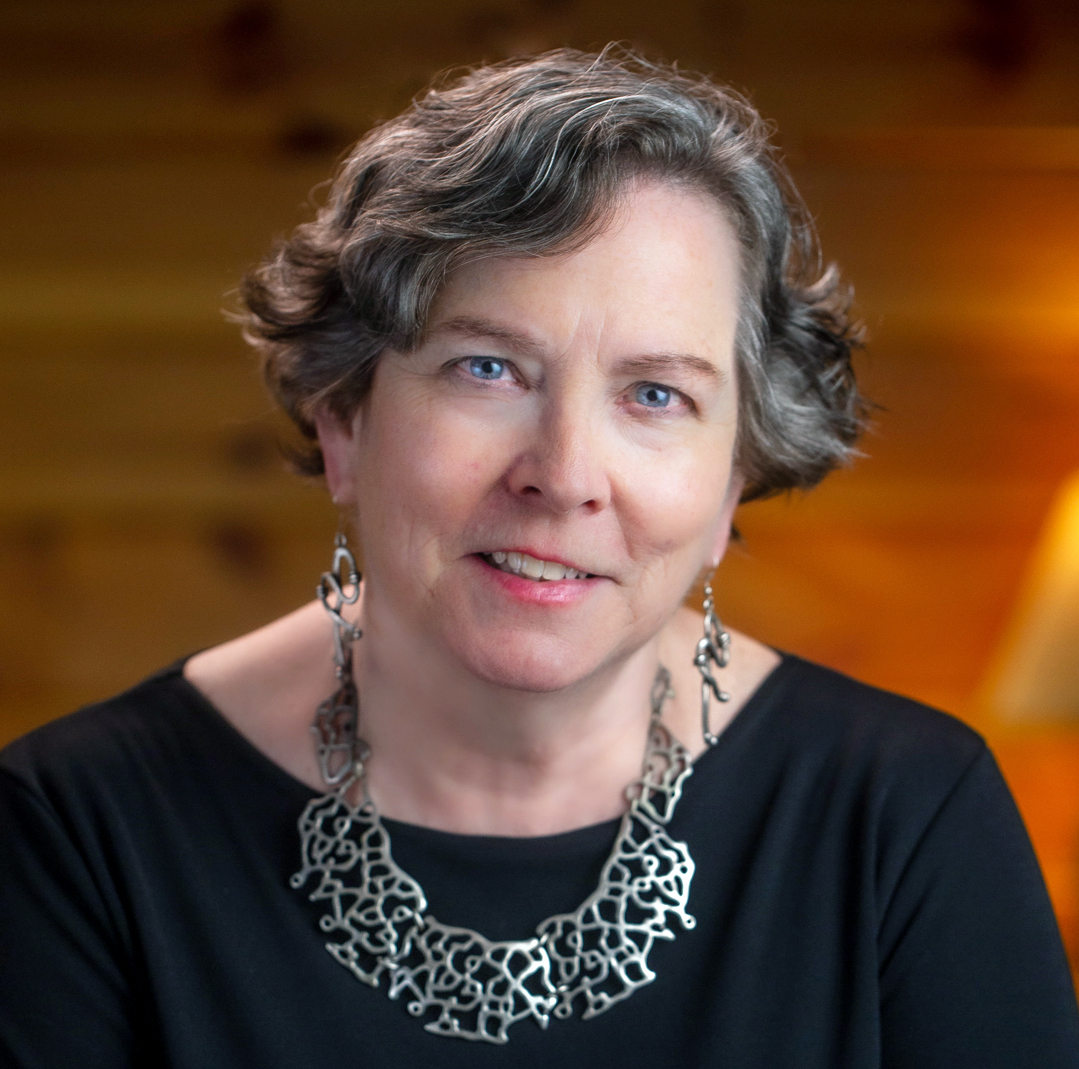 Susanne is the author of twelve works of historical fiction for adults and teens, as well as an Author Accelerator Certified Book Coach. Her love of historical fiction arose partly from her studies in music history at Yale University (PhD, 1999), partly from her lifelong interest in women in the arts as a pianist and non-profit performing arts executive. Her novel The Paris Affair won first place in its category in the CIBA Dante Rossetti awards for Young Adult Fiction. The Musician’s Daughter was a Junior Library Guild Selection and a Bank Street Children’s Book of the Year, and was nominated for the Utah Book Award and the Missouri Gateway Reader’s Prize. In the Shadow of the Lamp was an Eliot Rosewater Indiana High School Book Award nominee. Susanne earned her BA and an MA (musicology) from Smith College, and lives in Biddeford, ME, with her little dog Betty. You can find her at
Susanne is the author of twelve works of historical fiction for adults and teens, as well as an Author Accelerator Certified Book Coach. Her love of historical fiction arose partly from her studies in music history at Yale University (PhD, 1999), partly from her lifelong interest in women in the arts as a pianist and non-profit performing arts executive. Her novel The Paris Affair won first place in its category in the CIBA Dante Rossetti awards for Young Adult Fiction. The Musician’s Daughter was a Junior Library Guild Selection and a Bank Street Children’s Book of the Year, and was nominated for the Utah Book Award and the Missouri Gateway Reader’s Prize. In the Shadow of the Lamp was an Eliot Rosewater Indiana High School Book Award nominee. Susanne earned her BA and an MA (musicology) from Smith College, and lives in Biddeford, ME, with her little dog Betty. You can find her at 